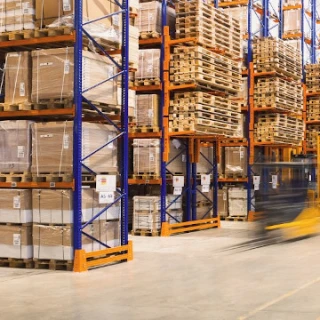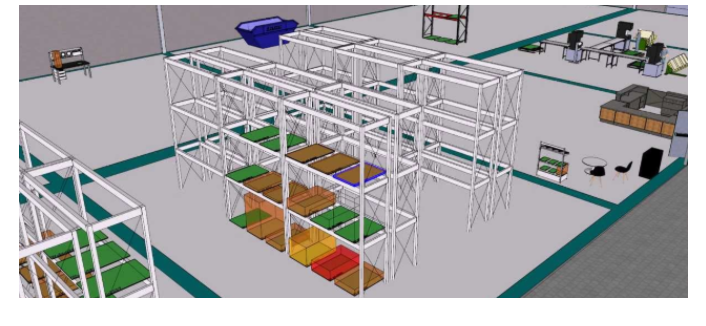Optimizing processes, optimising people
Concerning the inbound process, for example, a warehouse manager may want to experience a new operating method, tweaking the existing steps, designing a new floor layout or completely changing the handling process for inbound products until the process is fully optimised and efficient. A multitude of design and modeling approaches are offered by simulation tools to support the managers in these design challenges.
All direct labour involved in the receiving, storing, packing and shipping activities, can be supported by these new 3D virtual modeling and simulation tools, including various types of equipment such as AGVs and conveyors. Therefore, in this case, for example, a complete end-to-end inbound process flow can be designed within the 3D Digital Twin. It can fully simulate warehouse operators unloading bulk boxes from containers, then using conveyors to convey the goods from the goods receipt zone to a palletizer machine and finally autonomous forklifts performing the final put away. By using an appropriate data set, the warehouse manager can, for example, measure the current processing time for the unloading of goods and accurately reallocate the resources based on their idle time and distance coverage.
Regarding indirect labour and supervisors, the new digital platform offers a plethora of dashboards to model and measure the current performance and provide options to further model and measure potential increases in process efficiency. In addition, trainers may use the 3D virtual digital warehouse to visualise and upskill the warehouse leaders and team operators, with respect to any new future layouts and procedures.
Within the outbound process, retailers are continually looking for the optimal picking process; by using the 3D virtual digital warehouse for example, they can optimise the picking process using carts with the correct number of trays that will be required to fulfill e-comm orders. Another major challenge that can be digitally modelled is the ability to optimise the exit capacity of the total sorting and packing work centre availability. All of these operational process design challenges can be represented in a 3D Digital Twin simulation tool to allow upfront design and analysis, and to provide a clear view of on how we can fine-tune operational parameters for a better more optimised result, ultimately reducing upfront capital and long term operational costs.


/blog_3_720x360-(1).webp?mode=autocrop&w=320&h=240&attachmenthistoryguid=e58449dd-eb93-47fd-95b7-68a3c858da0a&v=&focusX=483&focusY=139&c=3c8cb7b38497bd1d59459f6171f3e647b044f670762500e1c7f4819b158590b0)
/blog_2_720x360-(1).webp?mode=autocrop&w=320&h=240&attachmenthistoryguid=2f82e2d5-33cc-4a07-b08f-dcdc54fd4013&v=&c=9a7654228385f9753b6c20aa0acf268c8b2993231eb9e90276447202a3befc9d)
/DUK-6-tips-running-remote-warehouse-750x400-(1).webp?mode=autocrop&w=320&h=240&attachmenthistoryguid=1c1eb4f5-863f-4e2d-b7e1-76f8bd330d42&v=&focusX=464&focusY=188&c=c8f7478c7be87c77b7e0feaf4a787fe83f106af2552079d0388b2bff7695ef3c)